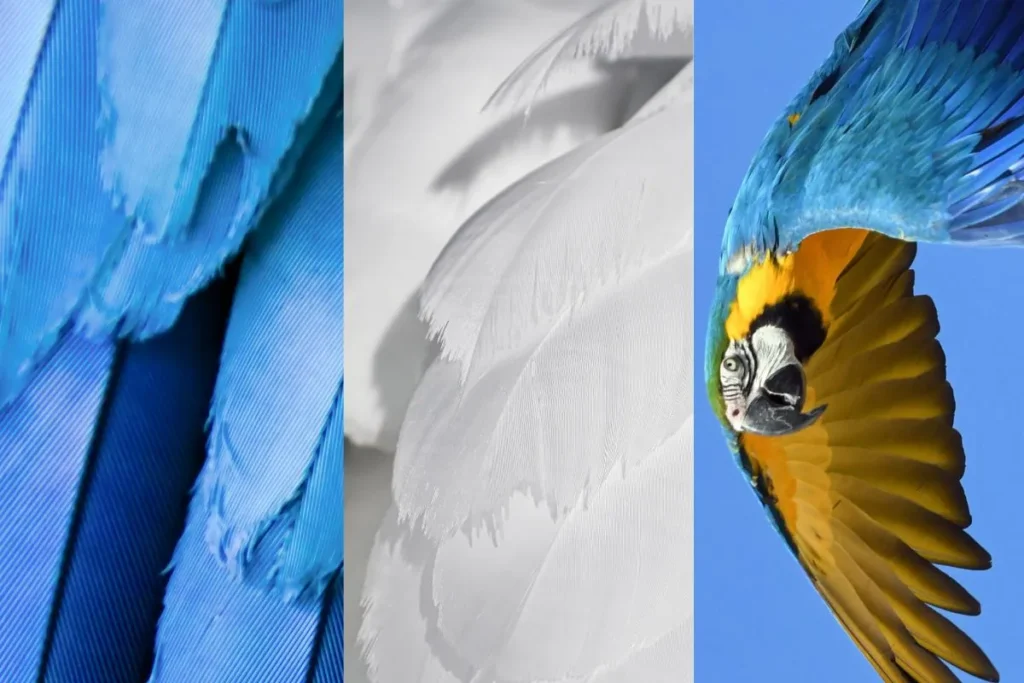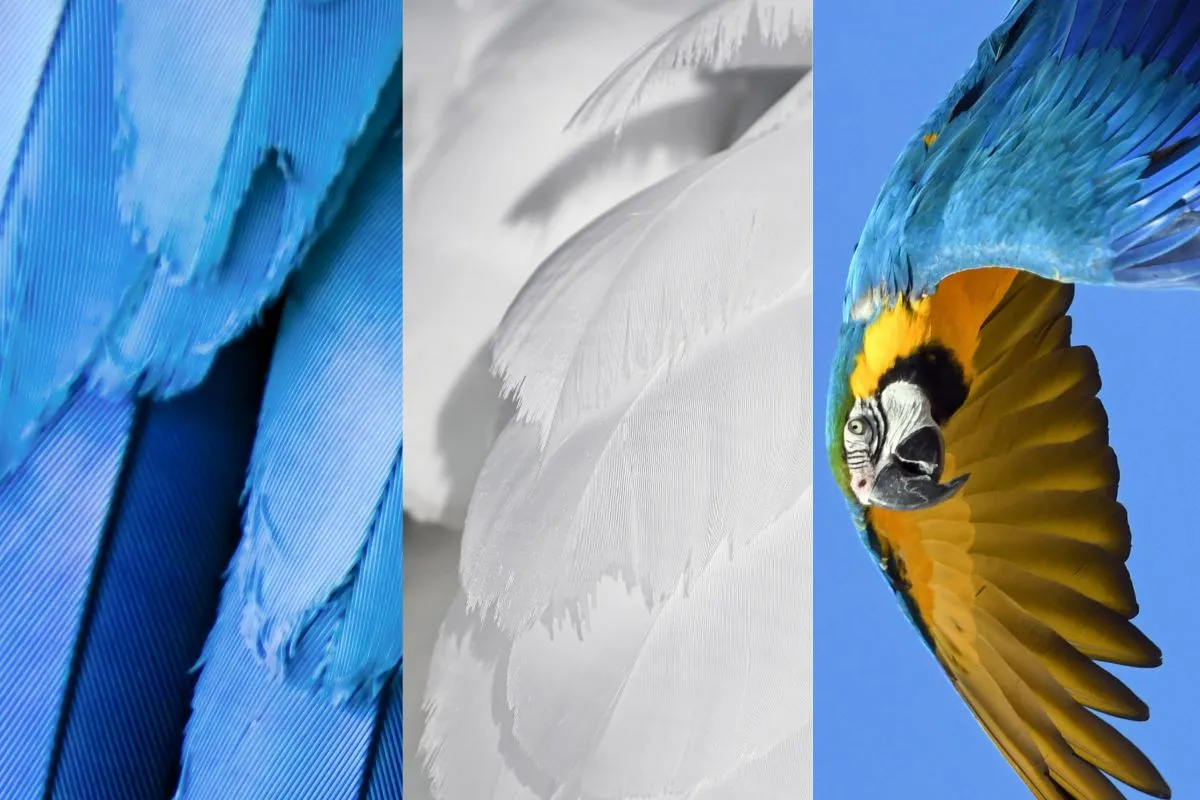Birdwatching can be an immensely rewarding hobby, allowing you to observe the beauty of nature while honing your skills in identifying various bird species. While many people rely on colors, size, or songs to identify birds, one often-overlooked method is analyzing their wing patterns. In this guide, we’ll dive deep into how to identify birds by wing patterns, which is one of the most effective ways to distinguish species, especially in flight.

Table of Contents
Why Wing Patterns Matter in Bird Identification
Identifying birds by wing patterns is one of the most reliable methods for birdwatchers. When a bird is in flight or perched, its wing structure and patterns can tell a lot about the species. Wing patterns are often more distinct and consistent than color, which can vary depending on lighting, molting, or age.
Birds’ wings have evolved to serve multiple purposes—helping them fly, court, and even communicate with other birds. Learning to recognize these patterns is essential for birdwatchers, especially when other features like size or color are obscured by distance or lighting.
Common Wing Shapes and Their Associated Birds
Before we get into patterns, it’s crucial to understand the basic shapes of wings. Birds have various wing shapes, each adapted to their specific lifestyles. Here’s a quick overview:
- Broad, Rounded Wings: Birds of prey, like hawks and eagles, often have these wings, helping them glide effortlessly while hunting.
- Long, Narrow Wings: These are typical of seabirds, like gulls and albatrosses, allowing for long, sustained flights over water.
- Pointed Wings: Birds like swifts and falcons have pointed wings that allow for high-speed, agile flight.
When you combine wing shape with wing pattern recognition, you significantly increase your chances of identifying birds correctly.
Detailed Analysis of Wing Patterns for Identification

Now, let’s get into the heart of the topic: Wing patterns can be subtle or bold, depending on the species, and can include stripes, bars, spots, or color-blocking.
Spotting Stripes, Bars, and Spots
Some birds have wing bars—distinct horizontal stripes that run across their wings. For example, the Eastern Phoebe has two white wing bars on its otherwise olive-brown wings. In contrast, species like the American Kestrel show more intricate, spotted patterns on their wings.
By focusing on these details, you can identify birds even if you catch only a quick glimpse of them mid-flight. Birds like warblers, thrushes, and buntings often have noticeable wing bars or spots, which serve as key indicators for identification.
Understanding Color Blocking in Wings
Certain species exhibit strong color blocking, where large sections of their wings are distinctly different colors. For example, the Black-and-White Warbler has sharp black and white contrasts that make its wings instantly recognizable. Similarly, the Northern Mockingbird shows bold white patches on its gray wings.
Color blocking in wings can also help you identify birds when the bird is perched, as the contrasting colors remain visible even at rest.
Edge and Underwing Patterns
Another crucial factor is the patterning along the edges of the wings or on the underside. Raptors like the Red-tailed Hawk have a distinct dark edge along their wings, while the Barn Owl shows a speckled underwing pattern that stands out when it glides through the sky at dusk.
Paying attention to these nuances helps you identify birds regardless of whether the bird is soaring overhead or perched in a tree.
How Light Affects Wing Pattern Perception
Light can significantly affect how we perceive a bird’s wing patterns. Bright sunlight can wash out colors, while overcast skies can make certain patterns pop. When observing a bird in flight, try to notice how the light plays on the wing’s surface, as some patterns may become more apparent in different lighting conditions.
For instance, some iridescent birds, like the Tree Swallow, may appear solid in poor light but reveal stunning blues and greens when illuminated. This makes it all the more important to factor in light when trying to identify birds by wing patterns.
Practical Tips for Observing Wing Patterns in the Field

Identifying birds by wings requires practice and patience. Here are some practical tips to help you improve:
- Use Binoculars: A good pair of binoculars will allow you to focus on details like wing bars and color blocking.
- Capture Photos: If possible, take photos of birds in flight so you can review the wing patterns later.
- Focus on Movement: Birds often display unique wing patterns when they flap, soar, or glide. Pay close attention to their movement in addition to their resting posture.
6. Birds with Iconic Wing Patterns to Look For
Certain birds are famous for their unique wing patterns. Here are a few to watch for on your next birdwatching adventure:
- Red-winged Blackbird: Famous for its bright red shoulder patches on black wings.
- Northern Flicker: Known for its striking spotted wings and prominent wing bars.
- Golden Eagle: Features bold, golden highlights on its broad wings.
- Peregrine Falcon: Shows dark barring on the underside of its wings, especially visible when in flight.
Each of these species is easily recognizable if you know how to identify birds by wings.
The Role of Wing Patterns in Migration and Behavior

Wing patterns aren’t just aesthetic; they often serve functional roles. For example, migrating birds like the Barn Swallow have streamlined wings with specific markings that make them more aerodynamic. The Harlequin Duck has bright wing patches that help the flock maintain formation during migration.
Knowing this helps birdwatchers not only identify birds but also understand why these patterns evolved in the first place.
Frequently Asked Questions
Q: Can wing patterns change as birds age? Yes, juvenile birds often have different wing patterns than adults. For example, young Bald Eagles have more speckled wings, whereas adults have the iconic solid white tail and head feathers.
Q: What’s the best time of day to observe wing patterns? Morning and late afternoon provide the best lighting for observing wing patterns. Birds are also more active during these times, giving you a better chance to see them in flight.
Mastering the Art of Wing Pattern Identification
Learning how to identify birds by wing patterns takes time, but it is one of the most rewarding skills for any birdwatcher. By understanding the nuances of stripes, spots, and color blocking, you’ll become adept at recognizing species both common and rare. Wing patterns provide essential clues that will sharpen your birdwatching skills, allowing you to enjoy the beauty of birds in flight with a trained eye.

